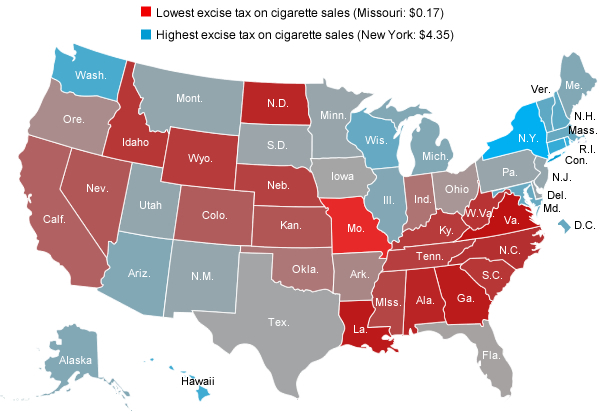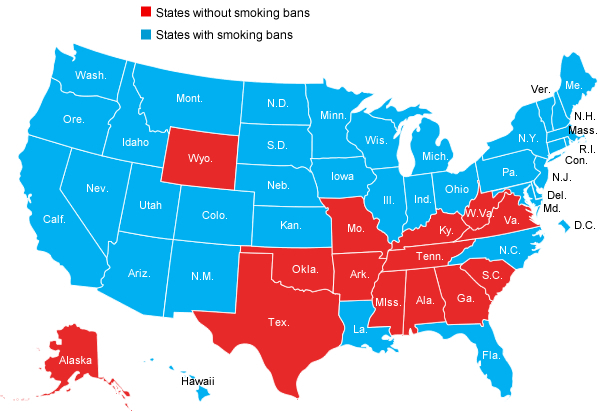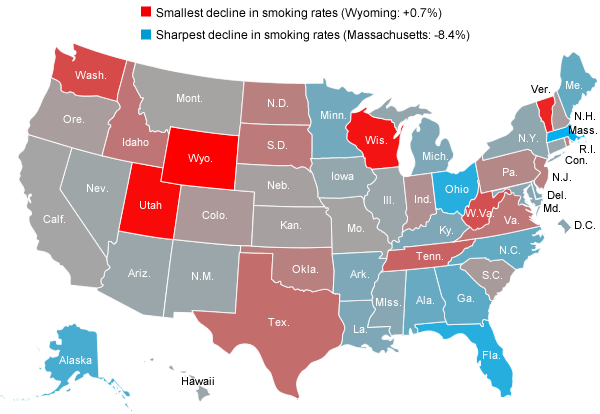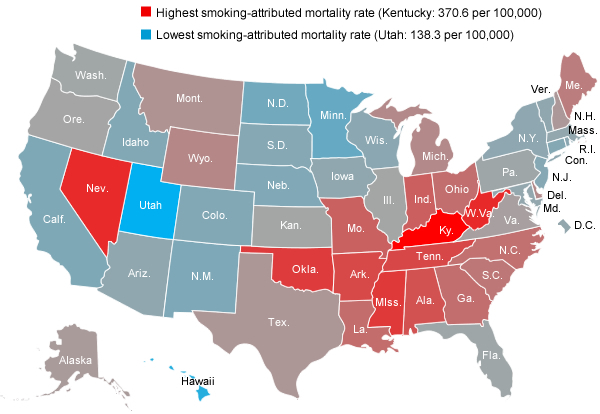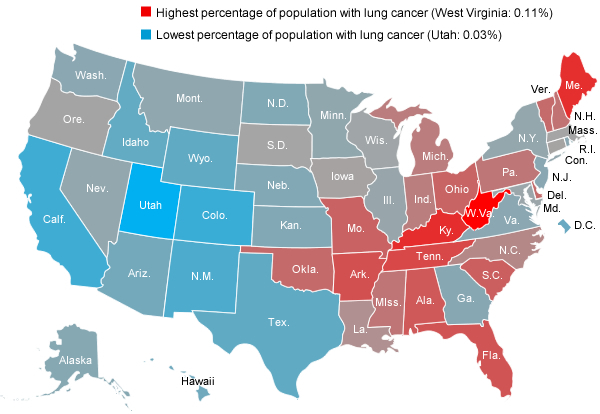Cigarette excise taxes
No surprises here – smokers in New York are aware of the $4.35 fee tacked onto every pack, while in states like Missouri, the tax is as low as $0.17.
States with bans on smoking in the workplace, bars, and/or restaurants
Similar to the other maps, most of the Southeast has a low tax on packs of cigarettes, and shown below, allows smoking in public places. A few states don’t fit the pattern, like Arkansas. It’s mid-range for excise taxes, but hasn’t banned smoking in public.
Declining smoking rates
Clearly, there’s a shift happening. Only a few states have increasing rates of smoking, like Utah and Wyoming. All other states have seen declines, led by Massachusetts at 8.4%.
Smoking-related mortality rates
As illustrated by the map, states with less stringent anti-smoking legislation have high mortality rates. Utah has the lowest mortality rate attributed to smoking (in part because of its Mormon population), and most of the South has fairly high rates.
Lung cancer incidence (prevalence?)
Cigarettes aren’t the only cause of lung cancer, and people are likely to inhale secondhand smoke or other pollutants in densely populated areas. The risk is also higher in states like West Virginia or Kentucky – areas known for tobacco production, and with an abundance of coal, or possible trace elements in the soil or water.
Interest in No Smoking Signs
Based on our data, Oregon is home to more smoking signs than any state. Naturally, the states with the fewest smoking-related laws are less likely to order No Smoking Signs.

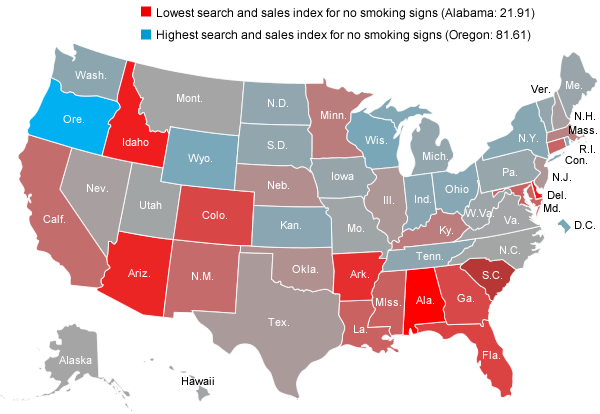
2012 presidential election results
States that lean Republican typically have less stringent smoking laws. On average, states with more lenient smoking regulations have a higher incidence of smoking. But, Utah is a notable example of where this theory does not always apply.

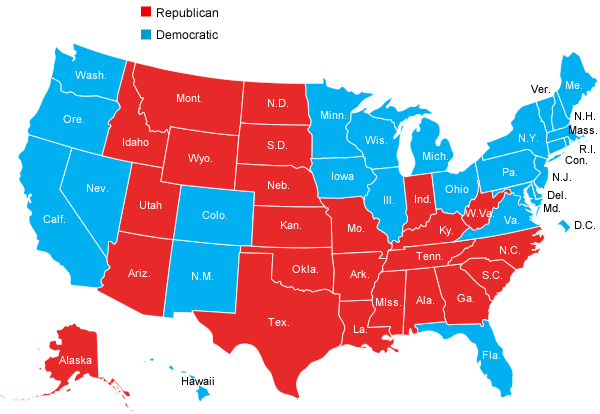
Sources
Cigarette excise taxes by state: Centers for Disease Control and Prevention, State Tobacco Activities Tracking and Evaluation System, 2012 (3rd quarter)
States with bans on smoking in workplaces, bars and/or restaurants:
American Nonsmoker's Rights Foundation, Oct. 5, 2012
Declining smoking rates: Centers for Disease Control and Prevention, Morbidity and mortality weekly report (MMWR), Nov. 5, 2010
Smoking-attributed mortality by state: Behavioral Risk Factor Surveillance System (BRFSS)
Lung cancer incidence: American Cancer Society, Cancer Facts & Figures 2012
Interest in No Smoking signs: Internal statistics, Xpressmyself d/b/a SmartSign.com
2012 Presidential election results: New York Times Election Results 2012









 Data shows connection between smoking regulations and mortality rates
Data shows connection between smoking regulations and mortality rates
